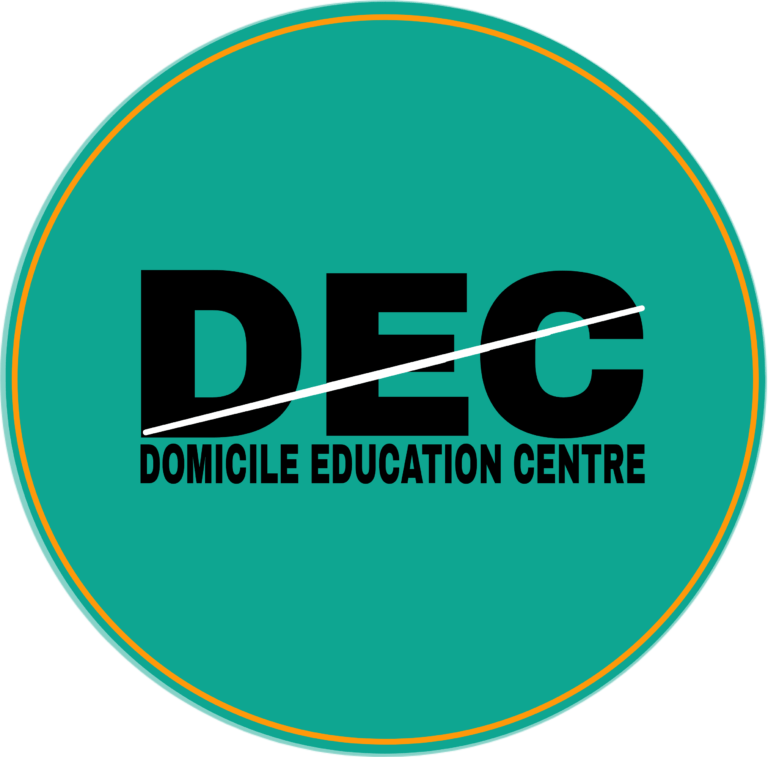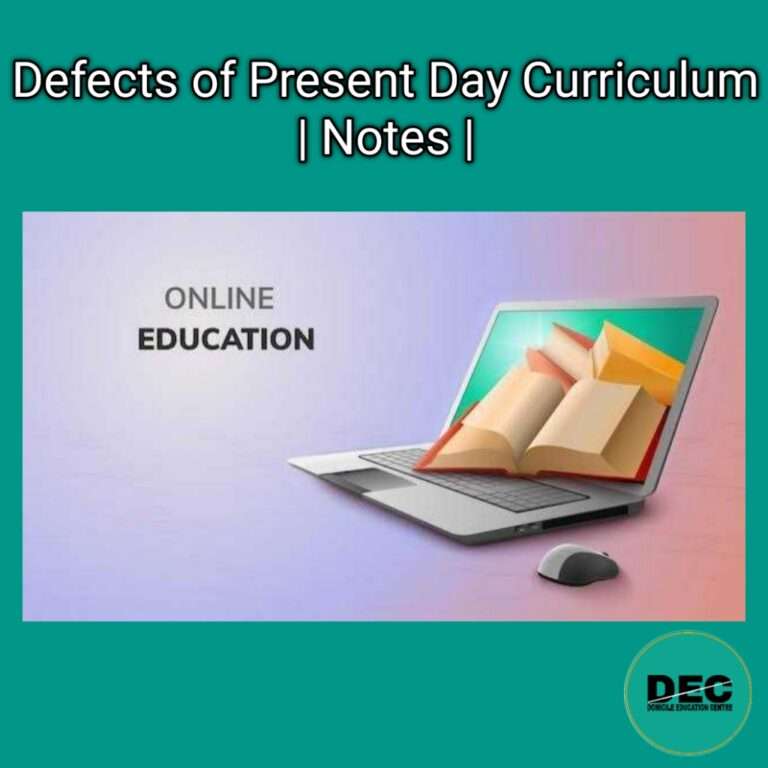The curriculum is an integral part of the school system which facilitates a teacher to transfer his thought to the students but now a days, the curriculum includes all the experiences gained by the pupils in the school and the community
Therefore, in this title you will find important questions answer to know about:
- Understand the meaning, definition and concept of curriculum.
- Different types of Curriculum.
- Different principles of curriculum construction.
- The defects of present day curriculum.
- Different types of Co-curricular activities, objectives and their importance.
1. From which Latin word has the word curriculum been derived?
Ans: The word ‘curriculum’ has been derived from the Latin word ‘currere’.
2. What is the meaning of the word ‘currere?
Ans: The word ‘currere’ means ‘to run’ or ‘race course’.
3. Define Curriculum.
Ans: In the words of Cunningham, “Curriculum is a tool in the hands of the artist (teacher) to mould his material (pupils) according to his ideals (aims and objectives) in his studio (school).
4. Discuss about various types of Curriculum.
Ans: There are basically divided into six types of curriculum which are briefly discussed below:
(i) Subject centred curriculum or Traditional curriculum:
This type of curriculum gives importance only for the intellectual development of a child and totally ignores the social and personal development of the child.
(ii) Activity curriculum:
This curriculum emphasises for the development of the constructive and creative urges of children which leads to the all round growth of their children.
(iii) Experience curriculum:
Experience curriculum takes place interaction between the teacher and the taught to share their rich and varied knowledge, skills, attitudes and appreciation between them.
(iv) Life centred curriculum:
This curriculum is also known as balanced curriculum which includes all the aspects of human activity and development to make enables the child to adjust himself properly to the complex and fast changing modern world.
(v) Child centred curriculum:
This type of curriculum follows the active method of learning by doing or learning through self-activity that believes in freedom, spontaneity, joy and delight in nature.
(vi) Correlated curriculum:
This curriculum is also be known as integrated curriculum. It believes in knowledge to be integrated and correlated rather than specialised and compart mentalised between theory and practice of knowledge.
5. Briefly explain about the principles that should adopted while constructing the curriculum?
Ans: The following principles should be followed while constructing a curriculum:
(i) Principle of Child-Centredness:
Child’s nature and need should be of primary consideration in the construction of curriculum. Therefore, the curriculum should be constructed keeping in view the present needs, interest, requirements and circumstances of the child.
(ii) Principle of Correlation:
The curriculum should not ignore the natural affinity. It should combine and correlate between theory and practice of knowledge.
(iii) Principle of Community Centredness:
A child is a future member of the society so that curriculum should train the child what the community wants him to become a successful member of the community.
(iv) Principle of Flexibility:
The curriculum should be flexible and dynamic. It should change the contents from time to time in order to keep it up-to-date.
(v) Principle of Utility:
The curriculum should include to make the child useful and productive member of the society. Therefore, work experience, technical and vocational subjects should be included in the curriculum to make it practical and useful.
(vi) Principle of training for leisure:
The curriculum should be designed as to train the students for utilizing their leisure time made for co-curricular activities.
Archives
6. Write four defects of the present day curriculum.
Ans: The four defects of the present day curriculum are:
(i) No place of Activity:
The present curriculum is mainly based on mere reading and learning of books. It does not give importance to the principle of ‘learning by doing’.
(ii) Unsuitable to children needs:
The curriculum does not cater the various needs and capacities of the children. As a result it has failed to serve the need of diversity of taste and talent of the students.
(iii) Dominated by examinations:
The present curriculum is just to memorise, pass the examination and get a job. It could not create genuine desire for knowledge and wider experience of life.
(iv) Not related to life:
The present curriculum is based on theorical and bookish knowledge. The subjects learnt have not importance at all related to our life means have no importance in our practical life.
(v) Narrowly Conceived:
Narrowly conceived is one another defect of the present day curriculum because it gives importance on subject instruction.
(vi) Over Crowding of Subject:
The Over Crowding of Subject matter or contents becomes difficult for the teacher to finish the courses and to make the students a big burden on their memory. This is also one another defect of present day curriculum.
(vii) Lack of Vocational Subjects:
Vocational subject is responsible in the present day curriculum but this basic need of the day to be neglected which could not make the students economically competent in life.
7. Discuss about various types of Co-Curricular Activities.
Ans: The co-curricular activities may be broadly divided into four major categories which are briefly discussed below:
(i) Physical Activities:
Such activities are boating, swimming, running, jumping, throwing, and other athletic programmes. These activities helps the students to maintain their physical health.
(ii) Academic Activities:
Academic activities such as recitation, essay writing, debates, extempore speech, etc. Such activities helps the child to develop his intellectual abilities like- power of thinking, reasoning and problem solving.
(iii) Social Activities:
Such activities like- NCC, Red cross, school cleanliness, etc. helps to train the students to develop desirable social qualities of cooperation, leadership, democratic values.
(iv) Emotional Activities:
This type of activities includes like singing, dancing, art, painting, craft works, etc. that helps the students to become emotionally matured in building a healthy personality.
8. Write four objectives of Co-curricular activities.
Ans: The four objectives of Co-curricular activities are:
(i) To inculcate democratic values in the students.
(ii) To prepare the students for social life.
(iii) To make the students self-reliant, self-disciplined, tolerant and sympathetic.
(iv) To remove the dullness of school life and make it interesting.
9. Mention six advantages of Co-curricular activities.
Ans: The six advantages of Co-curricular activities are mentioned below:
(i) Co-curricular activities can help in developing the psycho-physical health and hygiene, develop their manual and motor skill of the children.
(ii) They can help to identify the native talents, potentialities and prospects of children inherent in them.
(iii) These activities may provide ideal situation for training and development of the wider experiences necessary for our life.
(iv) Moral qualities like- tolerance, reverence, self control and will force may be developed in child’s personality through cocurricular activities.
(v) Emotional control and emotional maturity, development of finer sense of art and aesthetics may be achieved through co-curricular activities.
(vi) The co-curricular activities can help in the development of democratic values like-friendship, leadership, cooperation etc. in the children.
Related post just click here: Important Guiding Agencies in Education System.
Class-11 | Education | Notes |
Class-11 | Education | Question Papers |
Calendar of Content List:
| M | T | W | T | F | S | S |
|---|---|---|---|---|---|---|
| 1 | 2 | 3 | 4 | |||
| 5 | 6 | 7 | 8 | 9 | 10 | 11 |
| 12 | 13 | 14 | 15 | 16 | 17 | 18 |
| 19 | 20 | 21 | 22 | 23 | 24 | 25 |
| 26 | 27 | 28 | 29 | 30 | 31 | |


Recent Comments